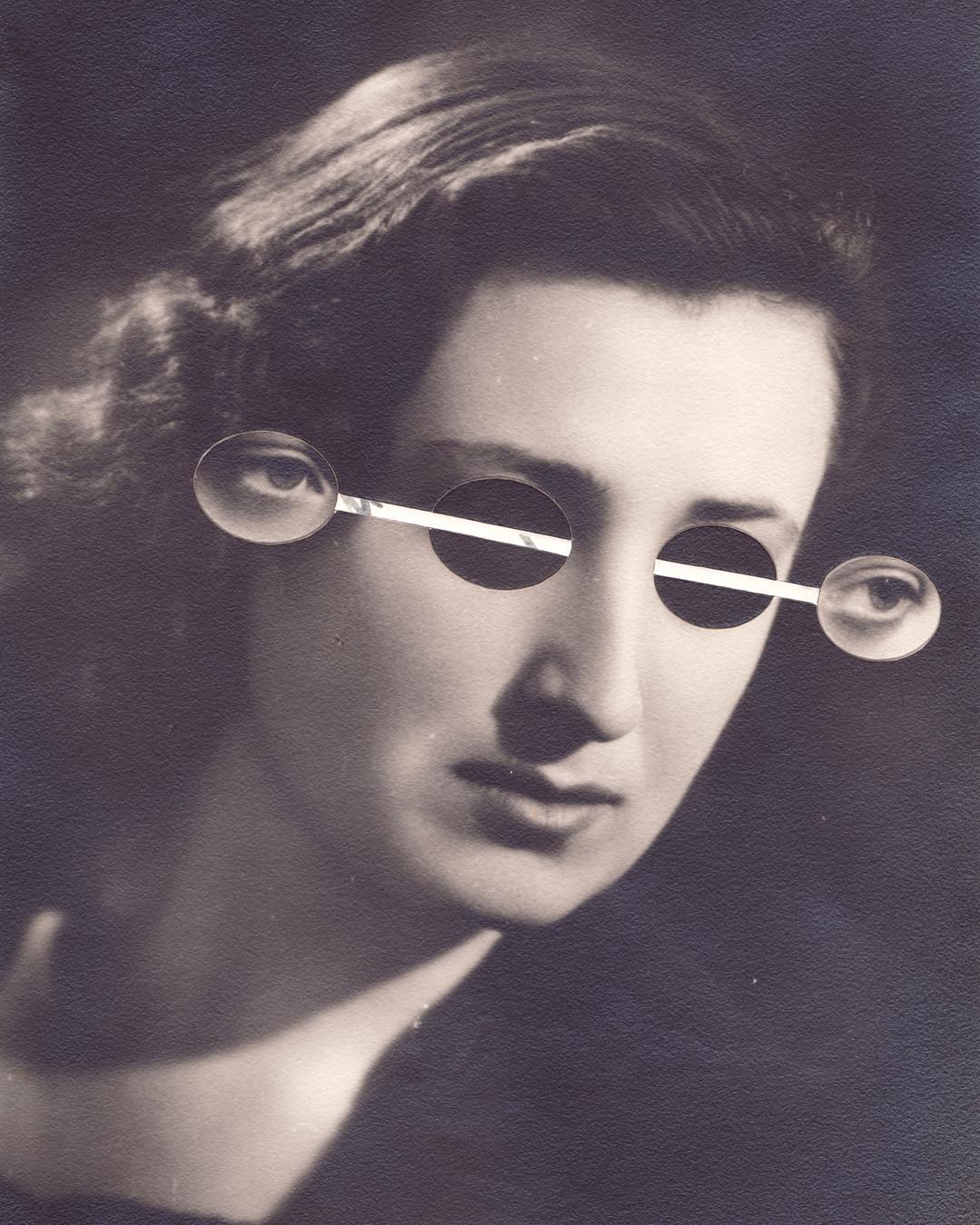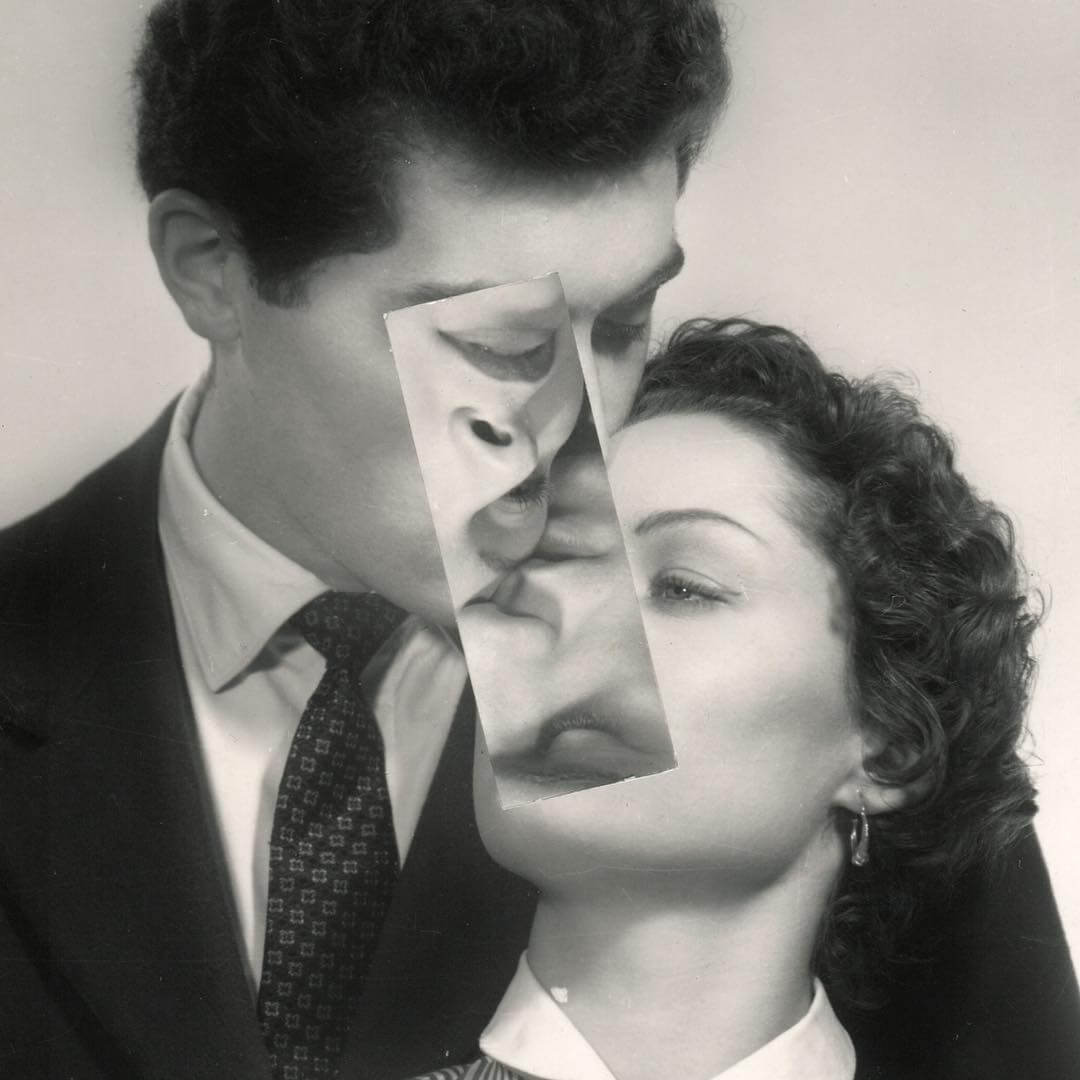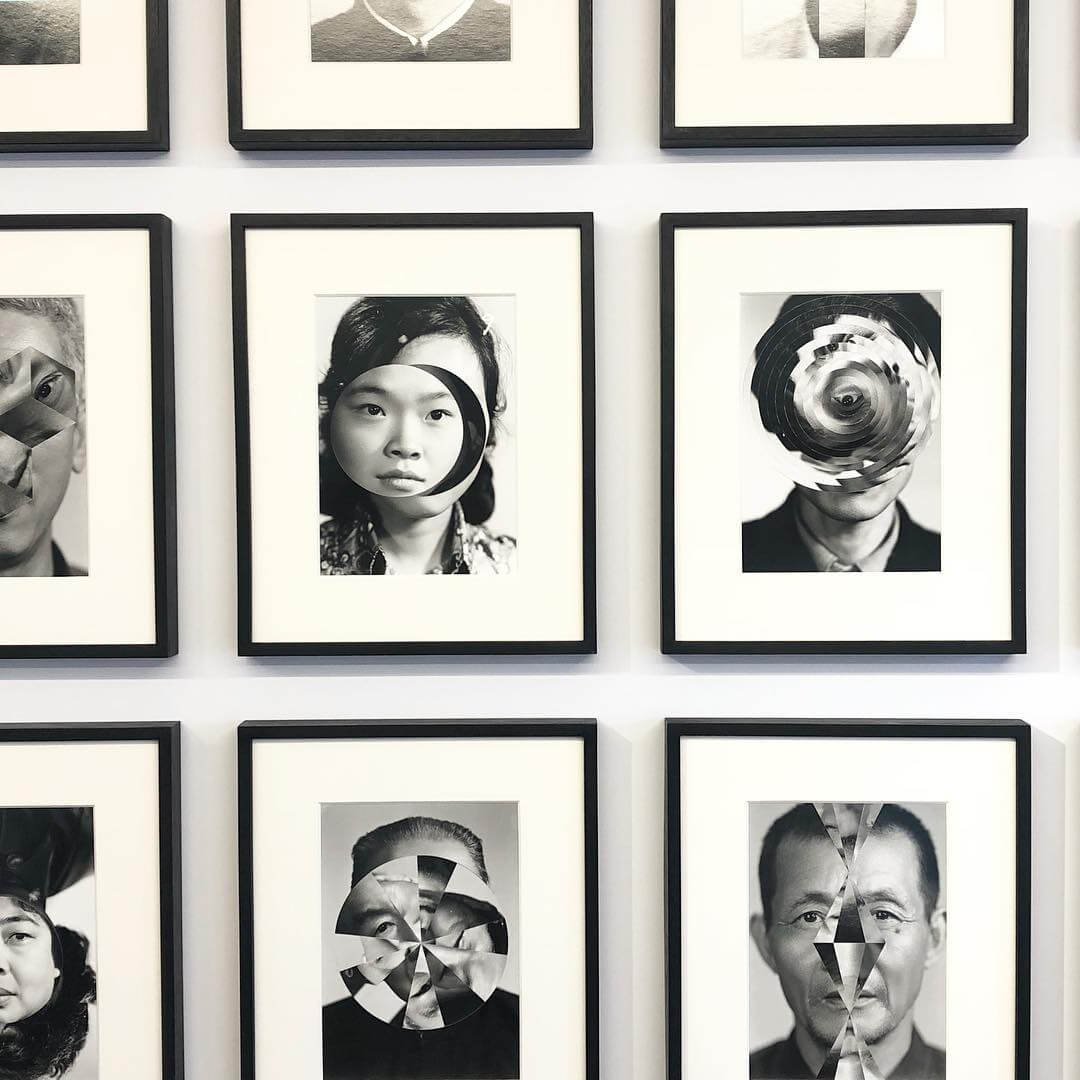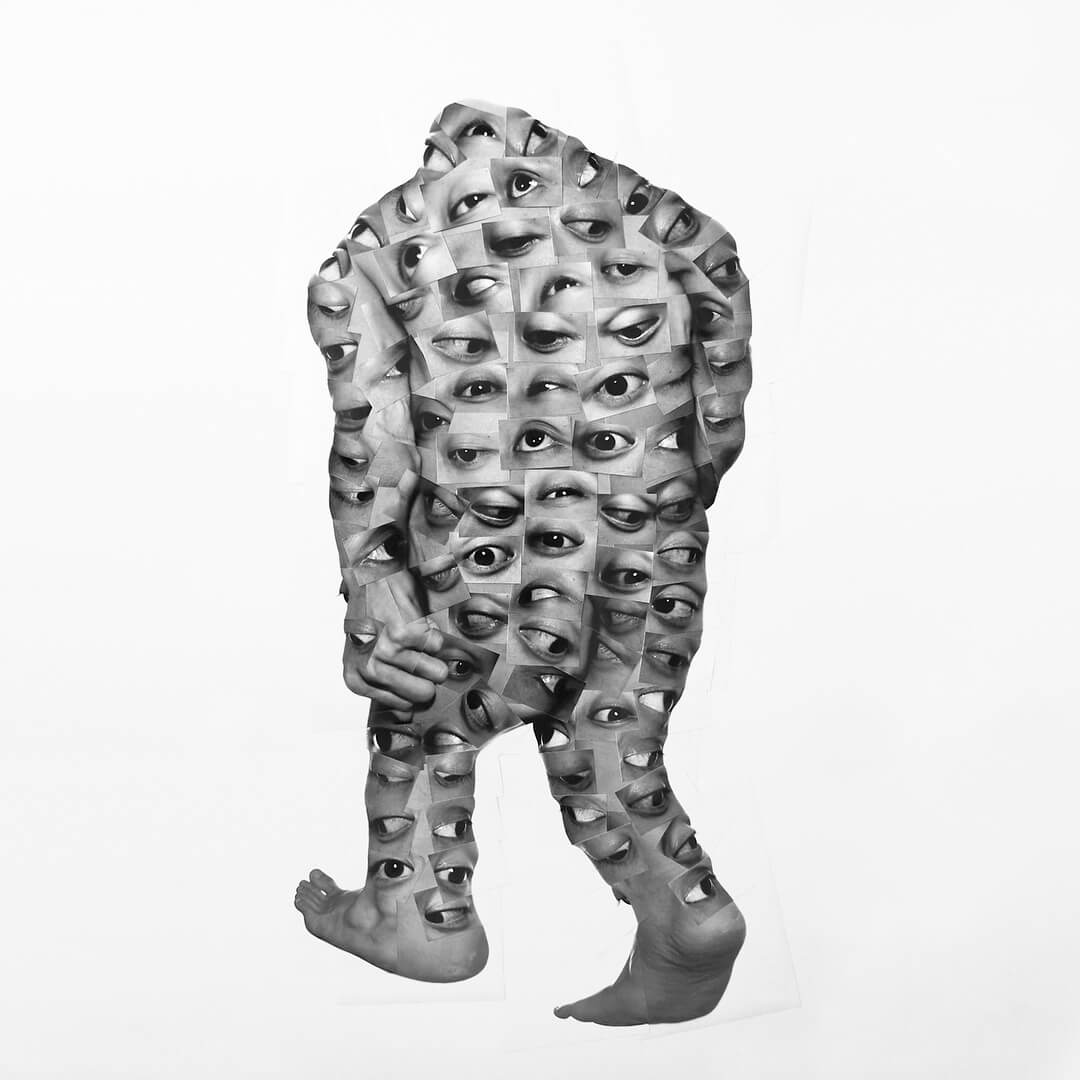Kensuke Koike, Alchemist of Distorted Photographs
Using images sourced from antique shops, the artist folds, tears and transforms photographs to create surrealist collages.

© Kensuke Koike
Cutting, tearing, disassembling before gathering up the pieces of photographs. Kensuke Koike‘s artistic process always begins with a deconstruction phase and ends with a final surrealist collage.
Born in Nagoya and having graduated in art from the Academy of Fine Arts in Venice in 2004, Kensuke Koike seemed more likely to end up behind a camera. But, after having found some old photographs in an antique shop in Milan in 2012, his destiny changed. Attracted by vintage photographs and always on the look out for black and white gems, the contemporary artist has a playful eye and draws on his fertile imagination to use a first photograph to create a new, independent image that is barely linked to the original. Thus, a man poses but with arms for legs and legs for arms, and a woman loses her eyes or has a cigarette placed in her hand.
Images that form through tearing
Perhaps even more interesting than the result itself is the process, documented in a video on his Instagram account. The viewer observes how he tears a postcard to reveal a woman holding a cigarette between two fingers. Slowly, the artist keeps tearing, turns the paper, folds it and continues his work until he reaches the cigarette. He finally assembles both parts of the sheet, and the tear suddenly transforms into a puff of smoke escaping from the cigarette, thus creating a new image.
This unusual art is intriguing. Beyond its simple technical aspect, it is perhaps the poetry of Koike’s works that is most powerful. The artist takes the time to take an interest in forgotten photos and, equipped with just his hands, gives a second life to the anonymous figures in these images.
Kensuke Koike’s work can be viewed on his website and his Instagram account.

© Kensuke Koike

© Kensuke Koike

© Kensuke Koike
TRENDING
-
The Tattoos that Marked the Criminals of the Edo Period
Traditional tattoos were strong signifiers; murderers had head tattoos, while theft might result in an arm tattoo.

-
Paris, Tokyo: Robert Compagnon
With his co-chef and talented wife, Jessica Yang, Robert Compagnon opened one of the top new restaurants in Paris: Le Rigmarole.
 3:31
3:31 -
The Story of Sada Yacco, the Geisha who Bewitched Europe
Described by Dazed magazine as the first beauty influencer, she has been restored to her former glory since 2019.

-
Ito Jakuchu's Naturalist Paintings
From 15 September until 14 October 2018, the Petit Palais showcased the artist's iconic ‘Images of the Colourful Realm of Living Beings’.

-
Chiharu Shiota, Red Threads of the Soul
Last year, more than 660,000 people visited the retrospective 'Chiharu Shiota: The Soul Trembles' exhibit at the Mori Art Museum.





